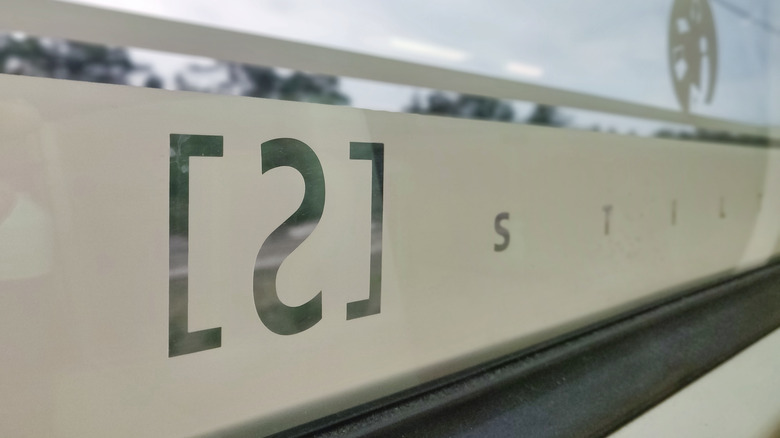The Silent Section Of Trains In Netherlands Tourists Need To Know About Before Visiting
Traveling by train in the Netherlands is, without a doubt, one of the most efficient (and picturesque!) ways to explore the country — and even country-hop throughout Europe as a whole. With an extensive rail network that connects cities like Amsterdam, Rotterdam, Utrecht, and other top destinations in the Netherlands — as well as pretty regular services that run from early morning until late at night — you can pretty much reach anywhere you want to go within a few hours.
And while Dutch trains might feel like an excellent transportation option, it's worth noting that they also come with their own set of unwritten rules that might send foreign visitors for a spin. One of the most important must-knows involves the stiltecoupé (or "silent car"): a designated quiet carriage where passengers must travel in complete (yes, complete) silence.
Marked with signs that say "stilte/silence" on the windows and doors — as well as a pictogram that appears to be doing the "Shhh" gesture — these carriages were first launched in 2003 and are generally available on most InterCity trains throughout the country. Along with carriages designed for chattier travelers and groups, as well as ones that serve as dedicated work and rest areas, the stiltecoupé is a distinct part of the Dutch train experience — one where even the faintest whisper might earn you a stern look from your fellow passengers.
Traveling aboard the stiltecoupé
For solo travelers, the stiltecoupé probably sounds like a welcome reprise where they can relax and travel in complete silence — without risking unwanted conversations or overhearing someone's loud phone call. Plus, they're also a total dream if you've been on a backpacking adventure and staying in hostels — where the noise, music, and overall loudness seems to never really stop.
However, the thing is ... not everyone who boards a train in the Netherlands is fully clued-in on the rules. Whether it's a lack of signaling or unclear expectations, this confusion can often lead to some pretty uncomfortable situations. As Redditor u/Kataly5t admitted on the r/Netherlands subreddit, "As a foreigner, I have accidentally violated this space without knowing until someone spoke up and notified me that this section is for quiet." Nonetheless, like with most cultural differences you might run into, it's just an honest mistake turned into a learning experience — so take it with grace and keep the rule in mind for the future. Plus, considering that most locals actually take these quiet zones very seriously — and they're not afraid to let you know if you're not meeting the level of quiet that's expected — you really shouldn't take it too personally if someone reminds you to keep it down.
@insidedutchculture Quiet carriages in the Netherlands are special sections of the train where passengers are asked to stay silent. Loud talking, phone calls, and noise are not allowed here. While intended for peace and quiet, they often lead to conflicts; some passengers ignore the rules, causing irritation and disputes with others who do want a quiet environment. #dutchtiktok #nederland🇳🇱 #dutchculture #dutchmemes
Don't worry, though: You won't exactly be shamed for "breathing too much" or "existing too loudly" (that's a level of drama that's best reserved for TikTok skits). You'll probably just be reminded that talking, phone calls, and even noisy headphones are all a no-go. And at the end of the day, let's be honest: Whatever conversation you think you need to have ... it can probably wait until you're off the train.

